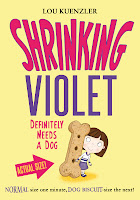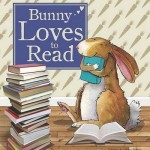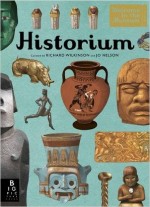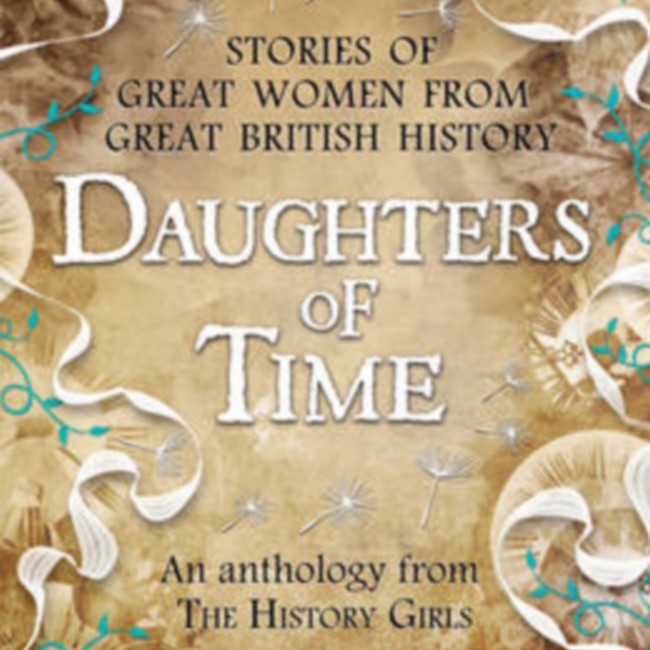Today I am delighted to welcome Lou Kuenzler, author of Shrinking Violet, which I reviewed here. Lou agreed to answer a few questions about Violet and writing, amongst other things.
Shrinking Violet is the first book in a new series for young readers aged 7/8. Could you tell us more about it?
Shrinking Violet is a funny story about a ten year old girl who loves thrills, spills and adventures. She longs to be 1.4 meters tall. This is the height requirement to ride on PLUNGER – the fastest, scariest roller coaster in the country.

At last Violet is tall enough. She knows this is true because Tiffany (her terrible teenage sister) has measured her. Mum has measured her. Dad has measured her. Gran has measured her. The school nurse has measured her. Even a man in a DIY shop with a tape measure has measured her …. But just as Violet steps up to the ride, she suddenly shrinks. She is no longer 1.4 meters tall – she is no bigger than a fish finger.
This is when Violet’s adventures really begin. She thought PLUNGER would be scary and exciting but, now she is tiny, the theme park itself is full of dangers – especially when she falls headfirst in to Dad’s cup of icy lemonade.
Violet soon discovers that her secret shrinking offers a whole new view of the world. But will that help her to prove her gran is innocent of a string of burglaries she has been accused of? And will she ever get her chance to ride on PLUNGER again?
Did you have any particular inspirations when writing the book?
I have always loved the idea of shrinking and little people. Two of my favourite books as a child were Mrs Pepperpot and The Borrowers. I remember, on the farm, I always used to look under stones in the hope I would find a tiny person living there. I never did find anybody … but I never quite stopped believing that I might. So, when an editor at Scholastic suggested it could be fun to write a story about a child who shrinks, my brain started whirring.
I think there is something wonderful about seeing the world from a different perspective.
There is a brilliant old fashioned toy shop near where I live. If ever I am passing, I always pop in to open the doors of the dolls houses to peek at the miniature world inside. I love all those tiny plates of food and tidily candle sticks. It’s just something that makes you hold your breath and think of magic and possibilities. I feel the idea of shrinking is the same. It makes you ask that best writing question of all: What if?
I hope it makes the reader ask the question of themselves: What if I shrunk too? What would it be like?
Shrinking Violet is a great name. I love the name Violet anyway, but love the pun too. What came first, the name itself, or the idea of a little girl shrinking?
That first meeting, when the idea of a “shrinking” book was discussed, was actually about something else entirely. I might have forgotten all about this casual suggestion … but on the bus on the way home, the title came to me in a flash: SHRINKING VIOLET! As soon as I had that title, I knew this was a story I wanted to write.
Straightaway I began scribbling down thoughts (anyone serious about writing should always carry a note book and pen – ideas can slip away just as easily as they come. I always think of that scene in the Peter Pan film. Hook has captured Tinkerbell inside a jar and she is battering on the glass to get out. Magic fairy dust is flying off her fists. That’s how plot ideas should be in the early stages – safely encased but desperate to be written …. Also, of course, Tink is furious and very funny. Conflict x comedy – a great start).
The expression “shrinking Violet” actually refers to someone who is shy and hides themselves in the shadows, of course – but this is nothing like my Violet. I wanted her, and the reader, to have as much fun with being tiny as possible.
If the character was anxious about being small (and easily squished) then I think the reader might feel anxious too. Violet, on the other hand, goes out of her way to find daredevil, hair-raising moments to enjoy. She is so determined and feisty, shrinking to the size of a pea pod isn’t going to stop her from having fun. In fact, Violet soon realises that there are all sorts of thrilling and fabulous things she can do when she is mini that she would never be allowed to get up to if she was full size. Something as ordinary as a paper handkerchief can become fun when you’re small. In one scene, in Book One, Violet skydives out of Mum’s handbag using a tissue as a makeshift parachute. In a later book, she barrel-rolls down a flight of stairs inside a Russian doll.
It is brilliant fun thinking up new things for Violet to try when she is tiny and new scrapes for her to get herself in to.
Yes, I love Kirsten’s pictures too. My favourite one in Book One is when Hannibal the chubby hamster falls on Violet’s head – because she is so tiny he looks like an enormous fur hat. Kirsten has captured the surprised expression on both their faces perfectly.
I do describe how Violet looks in the book but had no real idea how Kirsten would draw her. We had never met or spoken before the illustrations were submitted. The first thing I saw was a rough copy of the front cover (looking almost exactly as it does now). I couldn’t believe it! Kirsten’s drawings of Violet are the spitting image of my youngest daughter – right down to the way her fringe is slightly parted on one side. This has been a lovely thing for me and makes me smile every time I see the pictures. When Kirsten met my daughter for the first time at the book’s launch party, her jaw dropped open in surprise (a little bit as if she had seen her pictures come to life).
I always knew there would be black and white line drawings (but never dreamed they would be as gorgeous and expressive as they are). From the very first draft, I started playing with the idea of different styles and sizes of font. When Violet is tiny, for instance, the writing for her dialogue is much smaller than normal. I think this adds an extra element of fun to the story and the final design of the book by the Scholastic team is really inventive and lively. I love the way that when Violet gets wet and sticky, for example, the words look wet and sticky too.
I would recommend:
Mr Gum by Andy Stanton. I utterly, totally, completely love this series. I think it has shown how smart and zany children’s stories can be, giving full credit to young readers not only to to enjoy jokes about situation and character but also language, plot and structure itself. (Also, of course, it is gloriously silly and I love that.)
Ottoline And The Yellow Cat by Chris Riddell. This is such a gorgeous book to look at – stylish and chic – with a brilliantly eccentric central character inhabiting a wonderful world of mismatched shoes and leaping imagination.
The Eighteenth Emergency by Betsy Byars. This would probably be my desert island children’s book as I could read it again and again just to marvel at the simplicity and style. In short, the hero makes a big mistake and thinks, as punishment, he will get beaten up by the school bully. We then spend eighteen chapters on the edge of our seats, laughing, crying and fearing that the worst will happen (you’ll have to read it to find out if it does).
Two Weeks With The Queen by Morris Gleitzman. A story about grief and loss, for more mature readers in this age group. It is sad, shocking and hilariously funny. The central character is a brilliantly naive narrator, ensuring the child reader will simultaneously root for him, yet understand and delight in the shaky basis of his knowledge. Again a story that rewards young readers by crediting them with intelligence and empathy.
The Giggler Treatment By Roddy Doyle. Brilliantly funny. This used to make me and my daughters scream with laughter when I read it at bedtime. We’d be unable to finish our sentences we were laughing so much. More lashings of lovely silliness. Also biscuits … and a dog. What more could you ask for?
Many thanks, Lou, for answering these questions.






